Cruising for Ducks
Cruising for Ducks
Mothership Based Waterfowl Hunting in Argentina’s Paraná River Delta
By Ryan Sparks, Associate Editor
The ducks came from downriver, passed just over the rising sun and hooked across the decoys well within range. I began to raise my shotgun, but Luciano Alba extended his hand and pushed the barrel back down.
“Wait,” he said softly, his eyes never leaving the ducks. The group of six rosy-bills swung around the blind as Lucho called to them with a raspy moan unlike any duck calling I’d heard before. They slid back and forth squarely in front of us, losing elevation with each change in direction. With their feet stretching towards the water and wings backpedaling for landing, they descended towards the decoys. “Now,” Lucho said, just as softly as before, and we both raised our guns and dropped four ducks from the group.
“There will be plenty of ducks today,” said Lucho. “No need for anything but a sure shot.”
After three days of duck hunting in Argentina, I was beginning to learn. Back home in Minnesota, I wouldn’t have waited for anything better than that initial pass, but things are different here — wonderfully different.
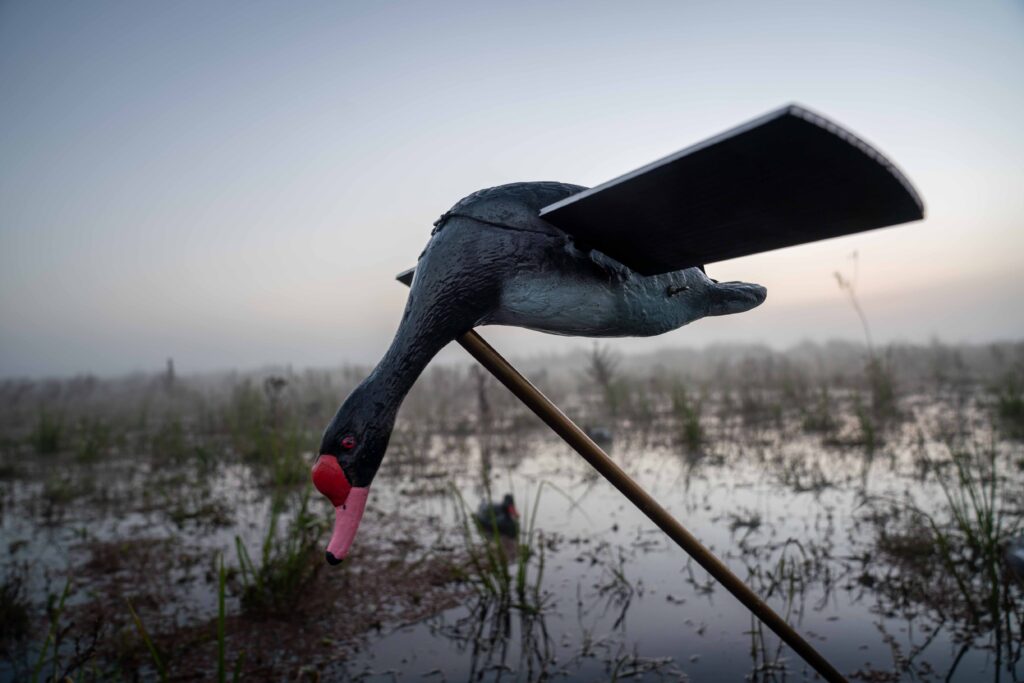
THE PARANÁ GIPSY
For years I had read about Argentina. How it is like Montana was 80 years ago. How there is little to no hunting pressure. I read about its incredible array of wildlife and vibrant culture. Now I had the opportunity to travel to Argentina at the invite of Justin Witt of Hemipheres Unlimited. Witt told me he had found a unique duck-hunting operation unlike anything he had ever seen. He said I would be foolish to let the opportunity slip by. Like a decoyed mallard dropping into the spread, I was sold.
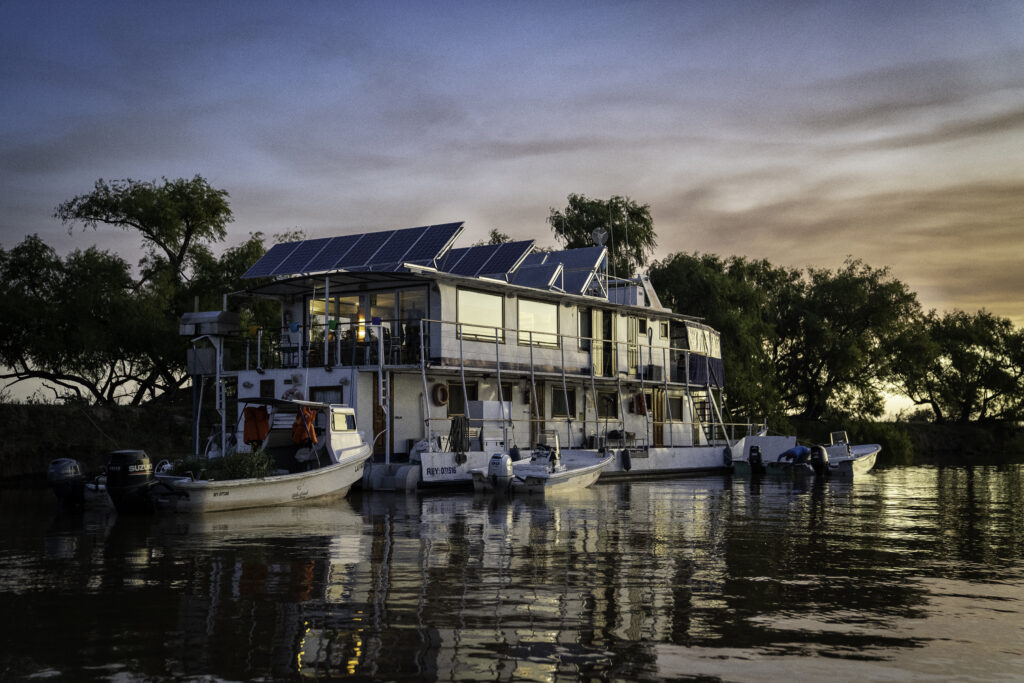
Following a flight into Buenos Aires, I met the other hunters on the trip at the Meliá Recoleta Plaza, the hotel where Evita Perón lived from 1942 to 1944. Sitting in the lobby bar the six Mainers told stories of moose hunts, brook trout and close calls with death. Coming from the spring turkey woods, the fall chill in the air was startling. It was my first trip to the Southern Hemisphere and the smell of autumn leaves felt like time travel. Yet, the odd feeling of trading spring for fall is what draws many duck hunters to Argentina — the opportunity to pack two waterfowl seasons into a single year.
The next morning, we loaded into a passenger van and set out towards the Paraná Delta, passing wild rhea (South American ostrich) and groups of perdiz feeding in the sprawling pasture lands along the rural highway.
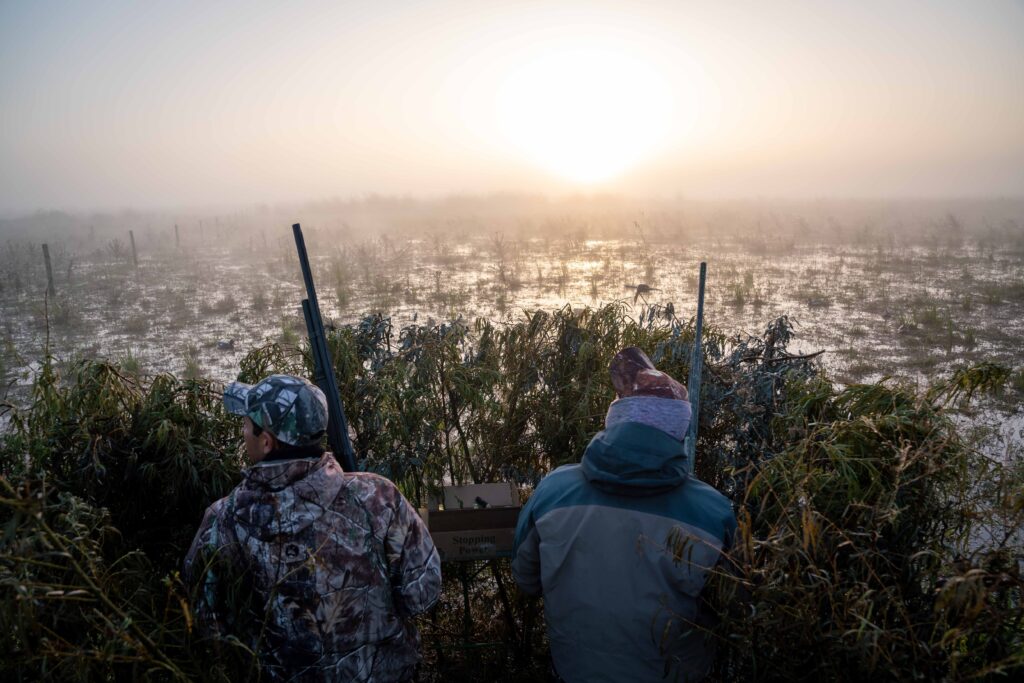
The Paraná River Delta is a vast system of interconnected rivers, creeks, tributaries, wetlands and marshes covering over a million square miles. It is the second largest river drainage in South America after the Amazon, draining an area over twice the size of Alaska. It encompasses the entirety of Paraguay and Uruguay as well as large portions of Brazil, Argentina and Bolivia. The name of the Paraná River comes from a Tupi Indian phrase meaning “as big as the sea.”
Due to its vastness, it is difficult to hunt even a small portion of the delta from a fixed land-based lodge. When we arrived in a small fishing village on the banks of a small rivulet adjoining the delta, a transport boat was waiting to take us upriver to the cruiser.
The Duck Hunting Argentina Cruiser is a mobile mothership operation, allowing access to areas of the Paraná River Delta previously untouched by hunters. The live-aboard cruiser, aptly named the Paraná Gipsy, is constantly moving, locating areas with unpressured ducks, hunting and moving on to new areas.
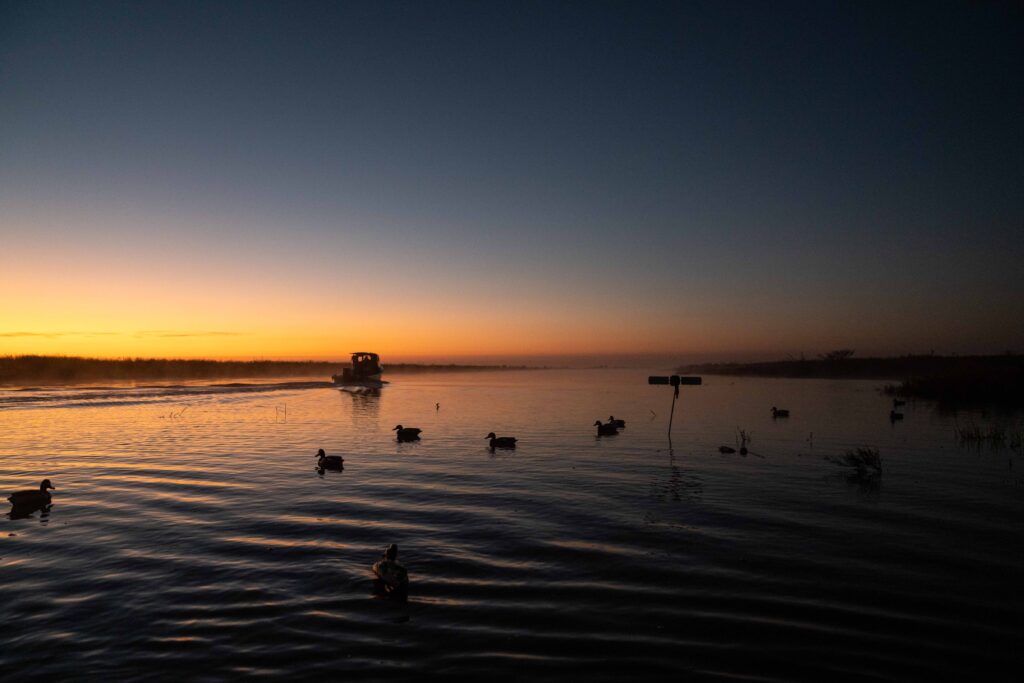
“In front of us, the braided river twisted back and forth like a frayed blue ribbon.”
After loading our gear into the transport boat, we motored along at a fast clip, passing gauchos working herds of cattle and locals who live in houses built on stilts and buy their groceries from supermarket boats. In front of us, the braided river twisted back and forth like a frayed blue ribbon.
As the sun set, we came around a bend in the river and found the Paraná Gipsy moored in a small back channel behind a mid-river island. Four skiffs lashed to the stern bounced in the current and wood smoke rose from the parrilla on the aftdeck. The Paraná Gipsy comfortably houses up to eight clients along with a handful of guides, an on-board chef and several staff members. Upon setting foot on the vessel, we were greeted by Luciano Alba (Lucho), owner of Duck Hunting Argentina Cruiser, and presented with a meal fitting of Argentina. Cocktails were served along with hors d’oeuvres of duck empanadas and Argentine charcuterie. Then several bottles of Argentine malbec were brought to the table along with long platters teeming with an Argentine asado of entraña (flank steak), lomo (ten-derloin), bife de chorizo (strip steak), ojo de bife (ribeye), morcilla (blood sausage) and asado de tira (short ribs).
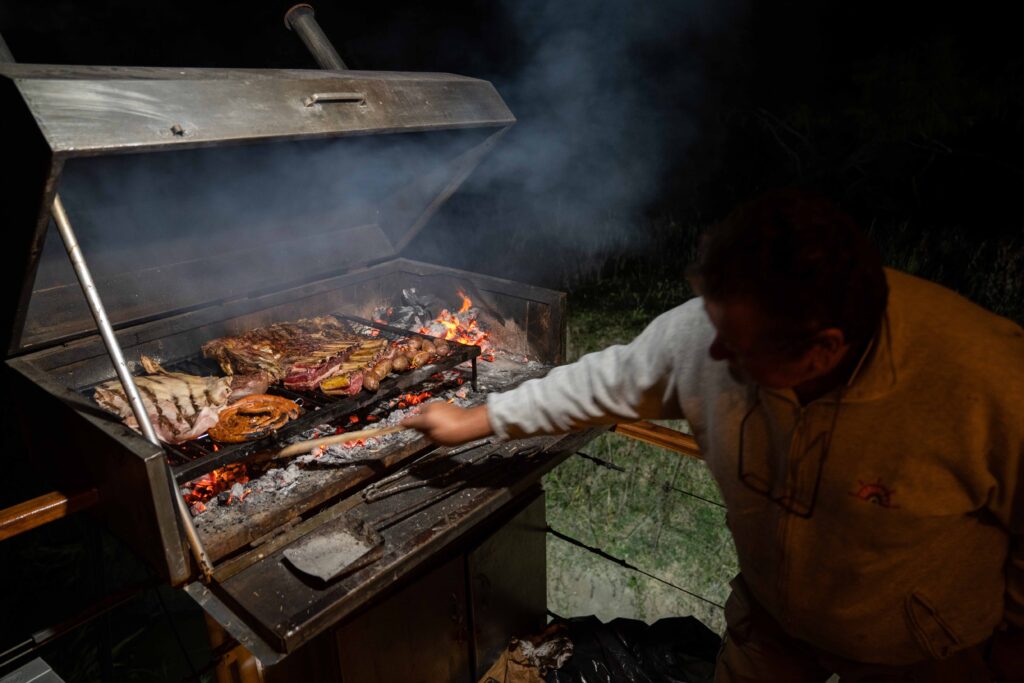
We spooned salsa criolla and chimichurri onto the meats, eating voraciously after a long day of travel. If that wasn’t enough, after the asado the chef presented a citrus dessert topped with a thin slice of spiced cake and homemade ice cream. Our bellies ached and one of the Mainers remarked in all seriousness that he was unsure if he could eat like that for another day, let alone three more.
Argentina is known for its incredible cuisine. A blend of Spanish, Italian and indigenous influences come together to create an amazing diversity of dishes. Asado is undoubtedly the national dish, with Argentines consuming the most beef per capita of any country in the world; over 150 pounds of beef per person each year according to a study. At dinner the evening before in Buenos Aires, I noticed chicken listed as a vegetarian option on the menu. During dinner, Lucho told us Argentines plan on one pound of beef per person for an asado, not including the other previously mentioned food. We might have been deep in the Paraná Delta, but each day we ate like we were in any of the finest restaurants in Buenos Aires.
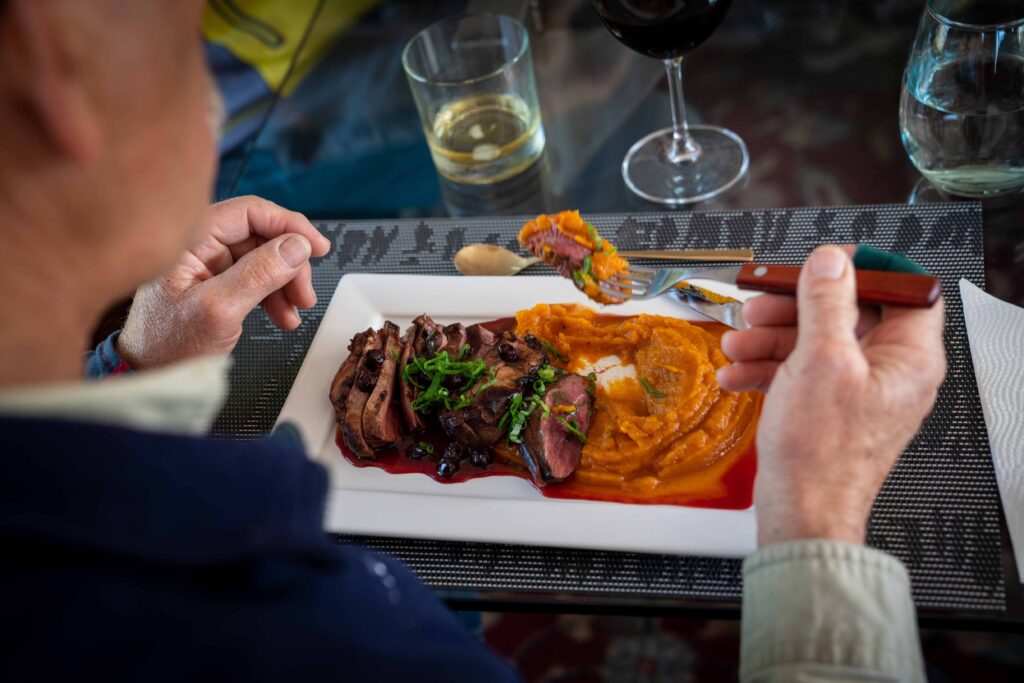
A MORNING OF FIRSTS
When we awoke the next morning, the cruiser was still underway, motoring upriver into a strong wind. After breakfast, we split into small groups and departed on the hunting skiffs towed behind the boat.
I hopped in with two of the Mainers and Federico Cantero, our guide for the morning. After a short boat ride, we stepped out into shin-deep water and waded across a marshy island to a willow blind Cantero had made the evening before. While we settled into the blind and readied our shotguns, Cantero tossed out a small spread of rosy-billed pochard decoys.
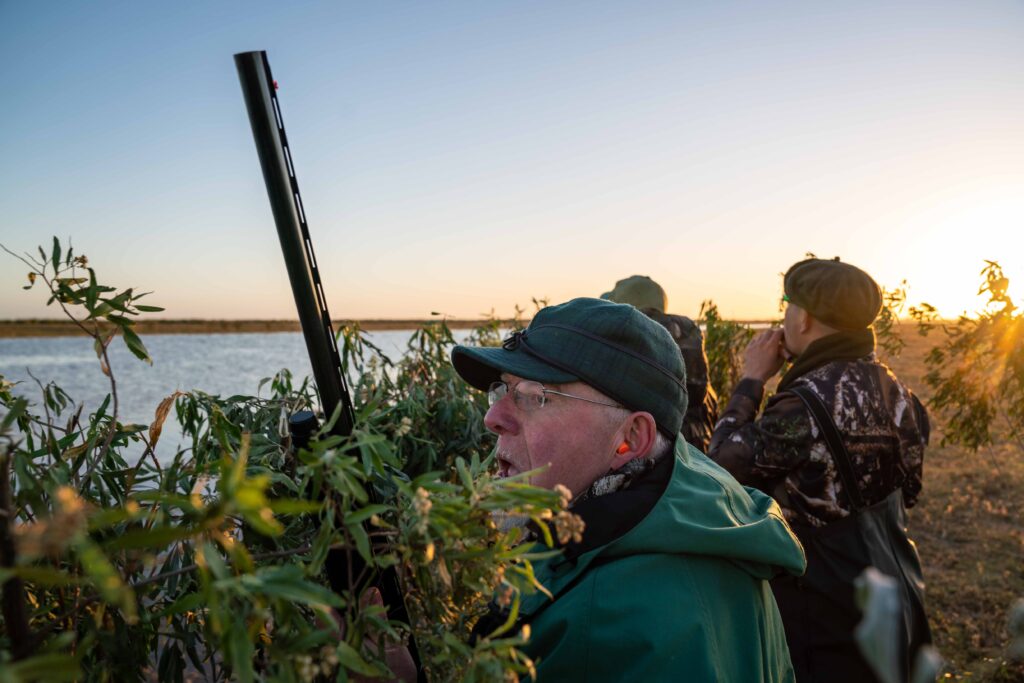
Though classified as a diving duck, rosy-bills feed more similarly to dabbling ducks. They are considered the king of South American ducks because they are large and respond to calls and decoys well. The drake’s distinctive bright red bill and white-tipped wings are striking. While adding more willows to the blind, Cantero mentioned they are his favorite duck species, both for their responsiveness to calls and as excellent table fare.
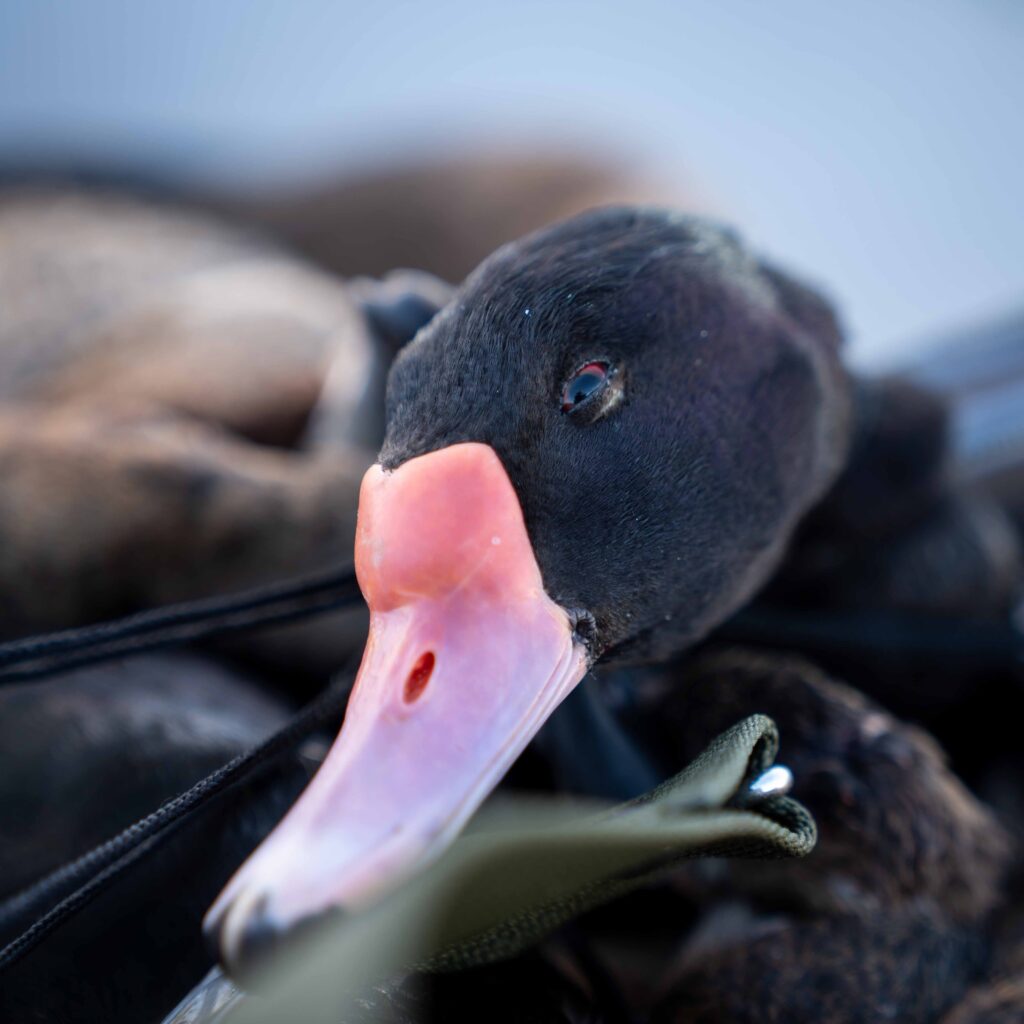
As the sun crept over the horizon, a pod of white-faced whistling ducks banked into the decoys. The Mainers dropped three while I shot with my camera. Soon after, a pair of Brazilian teal appeared in the distance, turned our direction, and soon fell to the water amid the echo of shotguns and a shower of turquoise-green feathers.
These were the first white-faced whistling ducks and Brazilian teal I had ever seen in person, and the morning continued to be a series of firsts as cinnamon teal, silver teal, red shovelers, ringed teal and rosy-bills were all stacked in the blind. I quickly traded the camera for my shotgun.
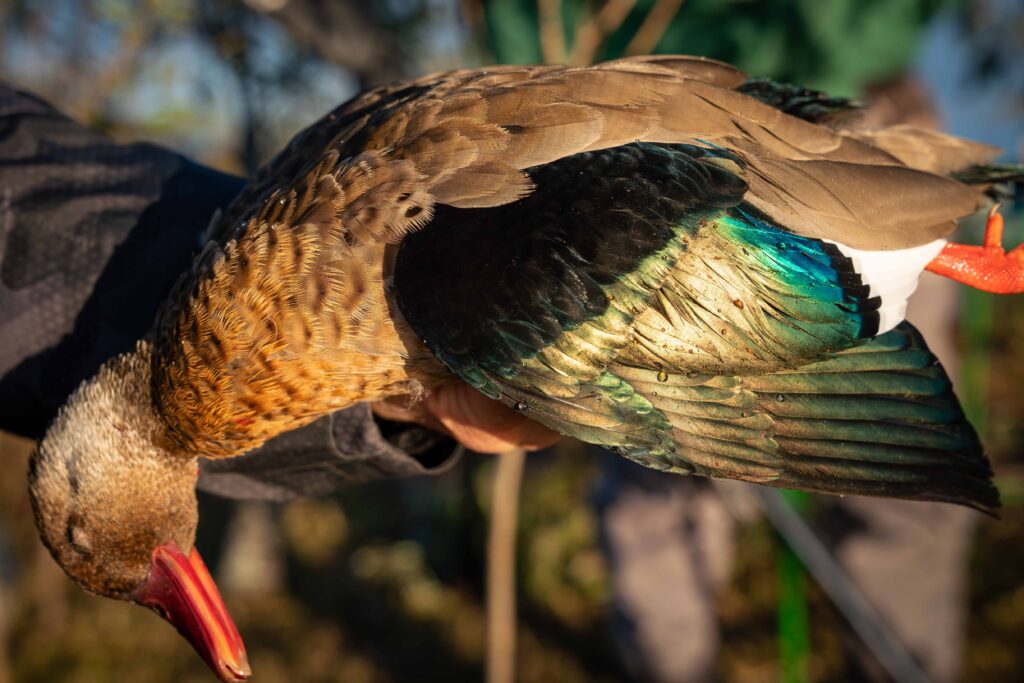
The silver teal were numerous, coming in low and quick with sporadic barking calls. Lifting one from the water to admire it, I was amazed by its sky blue and brilliant yellow bill, polka-dotted breast, and aquamarine speculum feathers reminiscent of a tropical saltwater flat. It was one of the most beautiful birds I had ever held.
Every time Cantero spotted a group of rosy-bills, he immediately stooped lower in the blind and grew serious. They usually circled high over the decoys, and we could hear the drakes’ soft whistles while the hens made loud raspy calls that seemed to shake from their bodies. They responded to calls like a mallard, dove into the decoys with the athleticism of a canvasback, and then quickly zipped across the water like a teal. I loved everything about them.
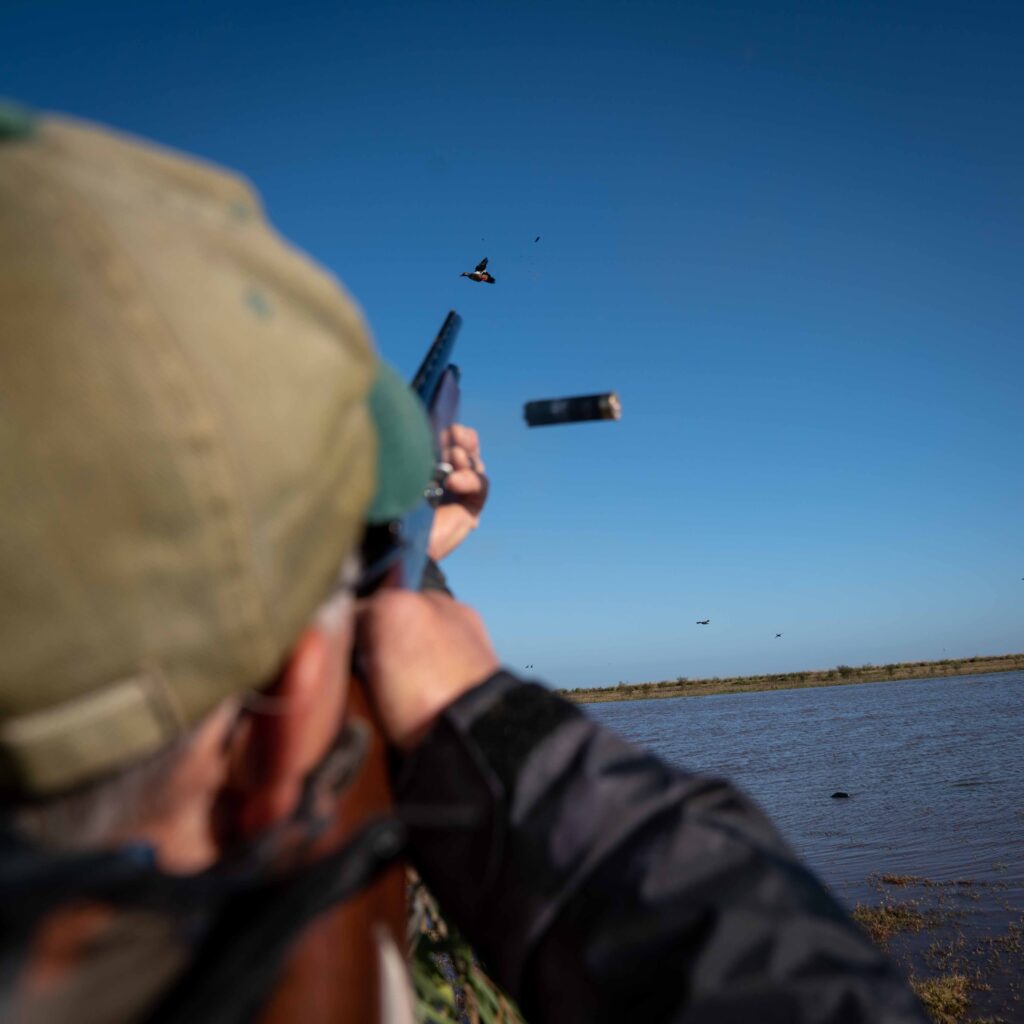
By midmorning the duck activity had tapered off. We loaded our gear back into the boat and then returned to the blind for the three heavy straps of ducks.
As we were turning to go, we heard a voice calling from behind us and turned to see a gaucho galloping his horse across the marsh, followed by his energetic cattle dog. As he rode, he hoisted a dead duck above his head, smiling. When he reached us, he explained he had heard the shooting and when he came to see what was going on, had found one of our ducks that had sailed out of sight. Cantero told him to keep it and offered him several more. The gaucho tucked them into his saddle bag, thanked us, and rode across the river.
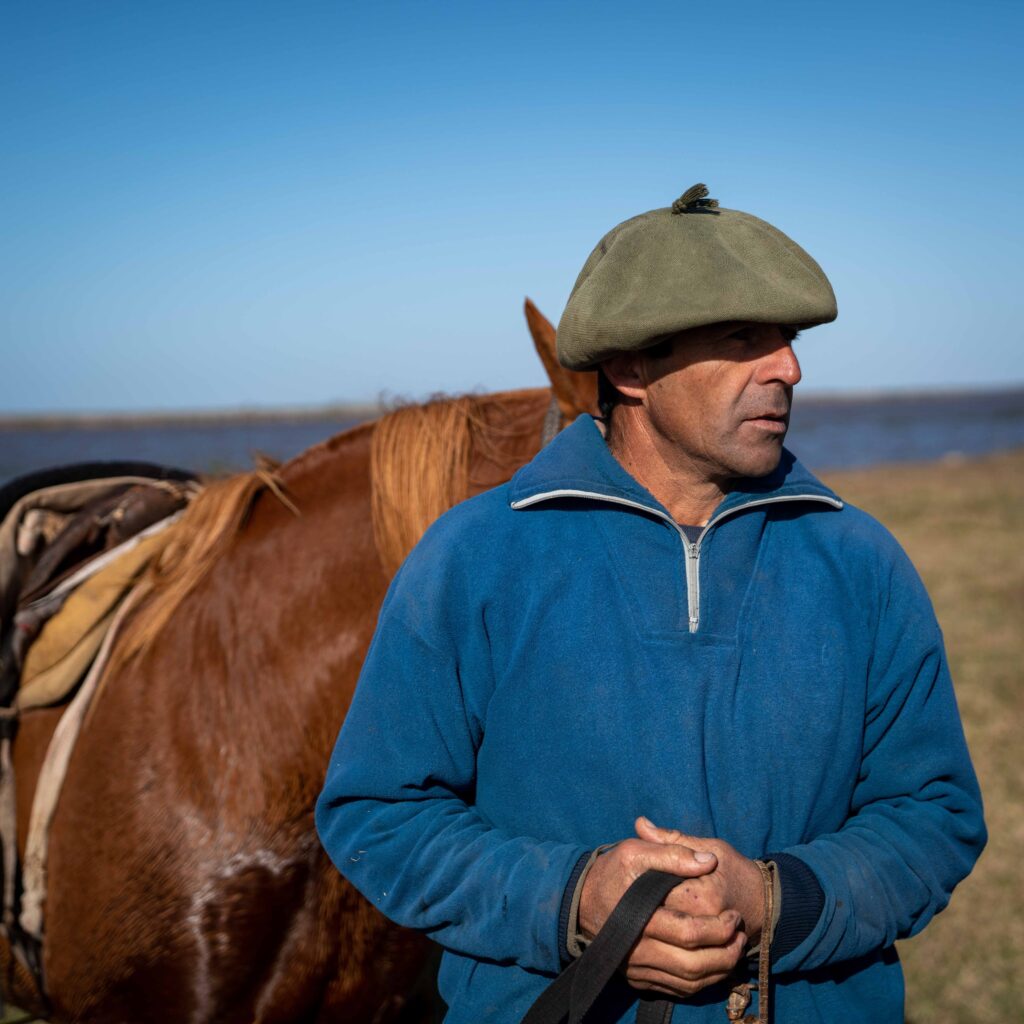
DORADO
After motoring back to the cruiser and changing out of our waders, lunch was served. Glasses of malbec were poured and plates of seared duck breast over pumpkin purée with cherry sauce were placed in front of us. Sitting around the large table in the dining room of the cruiser, we reflected on our respective morning hunts as we watched the landscape drift by outside. Everyone remarked on the excellent hunts they had that morning, the diversity of duck species, the beautiful country and the quality of the shooting. After our not-so-light lunch, Lucho asked what we wanted to do that afternoon.
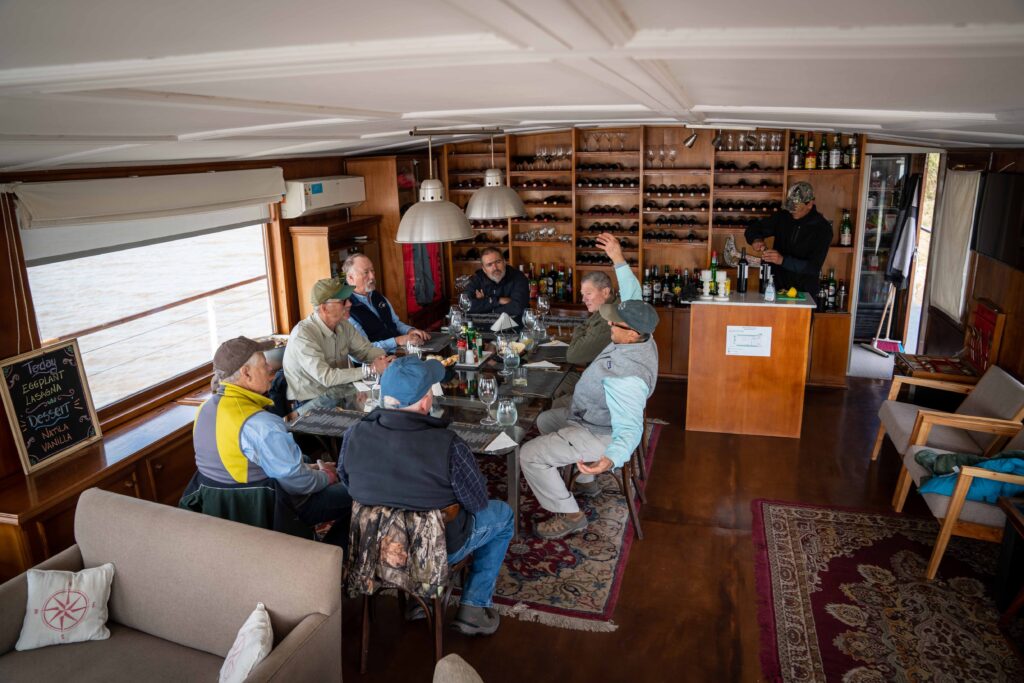
There was the opportunity for an evening duck hunt or to go fishing for dorado. Dorado are an aggressive fish that draw anglers from all over the world with their explosive power and brilliant golden color. With powerful jaws, razor-sharp teeth, and an extremely aggressive demeanor, many anglers consider golden dorado to be the ultimate freshwater fish.
It just so happens the Paraná River is considered a world-class dorado fishery, presenting a unique cast-and-blast opportunity. Lucho explained that the strong upriver wind was holding water in the river, making fishing conditions tough, but there was always a chance for a nice dorado. We spent the afternoon casting large streamers to the bank with fly rods, but the high water that made the duck hunting so good that morning also made the fishing difficult.
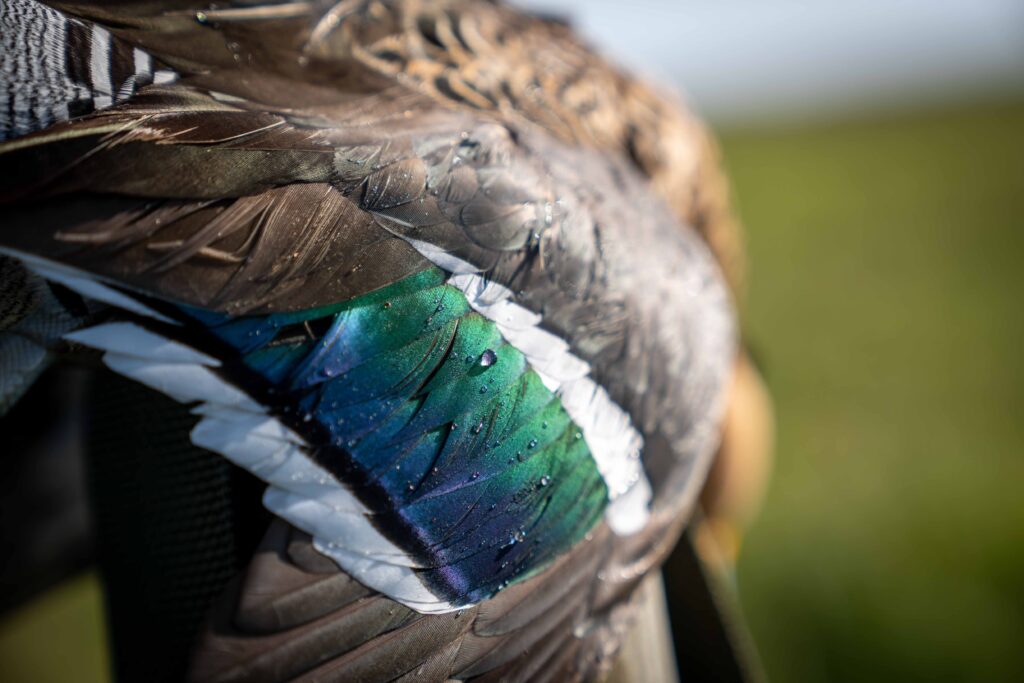
“Lifting one from the water to admire it, I was amazed by its sky blue and brilliant yellow bill, polka-dotted breast, and aquamarine speculum feathers reminiscent of a tropical saltwater flat. It was one of the most beautiful birds I had ever held.”
Despite the conditions, I connected with a small dorado as the sun began to fade below the horizon. I was impressed by its strength despite its stature.
That evening, I sat with Lucho on the back deck of the cruiser enjoying a cocktail and cigar under the night sky. Lucho told me about their operation, how it was in its ninth year, and how they are continually finding new areas to hunt and fish. We talked about trout, red stag, doves, dorado and ducks. As the sky cleared, I looked up at the stars, but everything looked different.
“That’s because you’re in a different hemisphere my friend,” Lucho said smiling.
Looking up at constellations unique to the Southern Hemisphere was like looking at a new sky. It gave me a feeling of wonder and admiration.
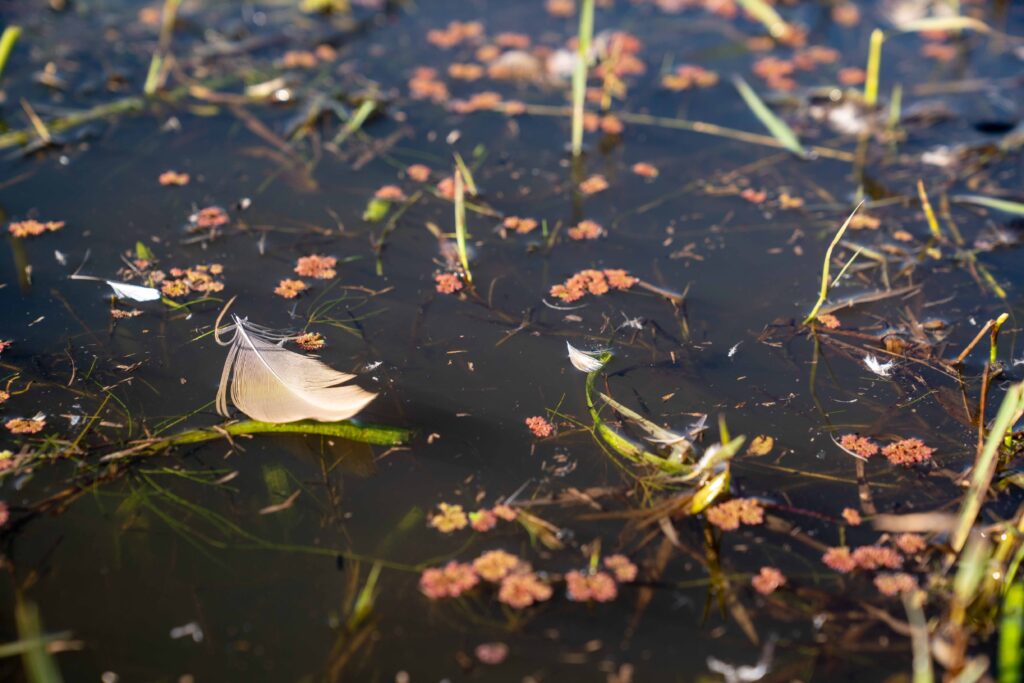
DUCKS IN THE FOG
The next morning, Lucho invited me to come with him and Miguel Torres, a veteran guide, to one of his favorite hunting spots. Overnight, a thick fog had covered the area, and as we made our way toward the blind, we could only see a few feet in front of the skiff. The fog and pre-dawn darkness combined with the strength of the swollen river was both worrisome and exciting. As we slowly motored along the bank, entire trees floated by in the current as evidence of recent flooding, their tangled root balls rolling in the dark water.
When the boat slid onto a small sandbar, we unloaded our gear and were thankful we had arrived safely. Adjacent to the sandbar, a steeply eroded bank rose nearly 10 feet. We tossed the bag of decoys upwards and scrambled over the bank. Once on top, we slogged through thick vegetation and ankle-deep water, following a barbed-wire fence for a few hundred yards before arriving at a circular willow blind. Under the light of our headlamps, we tossed decoys into the shallow marsh. All around us I could hear ducks calling and the whistle of wings as the marsh came to life.
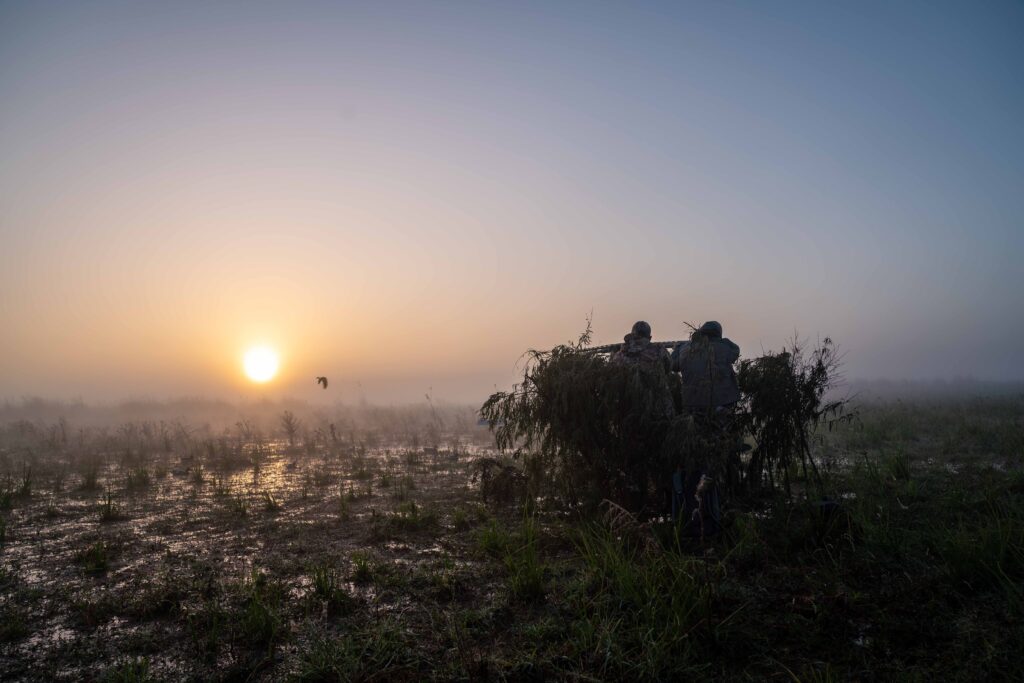
“As the rising sun cast an amber hue across the marsh, the shooting was close and intimate as ducks appeared out of the swirling fog and hooked into the decoys.”
What followed was the single greatest duck hunt of my life. I initially grabbed my camera and tucked into a clump of marsh grass to the side of the blind while Lucho and Torres loaded their shotguns and waited for shooting light. As the rising sun cast an amber hue across the marsh, the first group of teal came streaking in from the left.
Soon, all varieties of teal were bombing in, almost trying to land at our feet. I took a few photos and then loaded my shotgun. The swirling fog made it so that we would often hear ducks before we could see them. They would suddenly explode from the mist no more than 20 feet away, making the shooting quick and intimate. It was the type of morning duck hunters dream of — sunlight slanting through a shroud of fog, small groups of decoying ducks, high-quality shooting and enough time between groups for conversation.
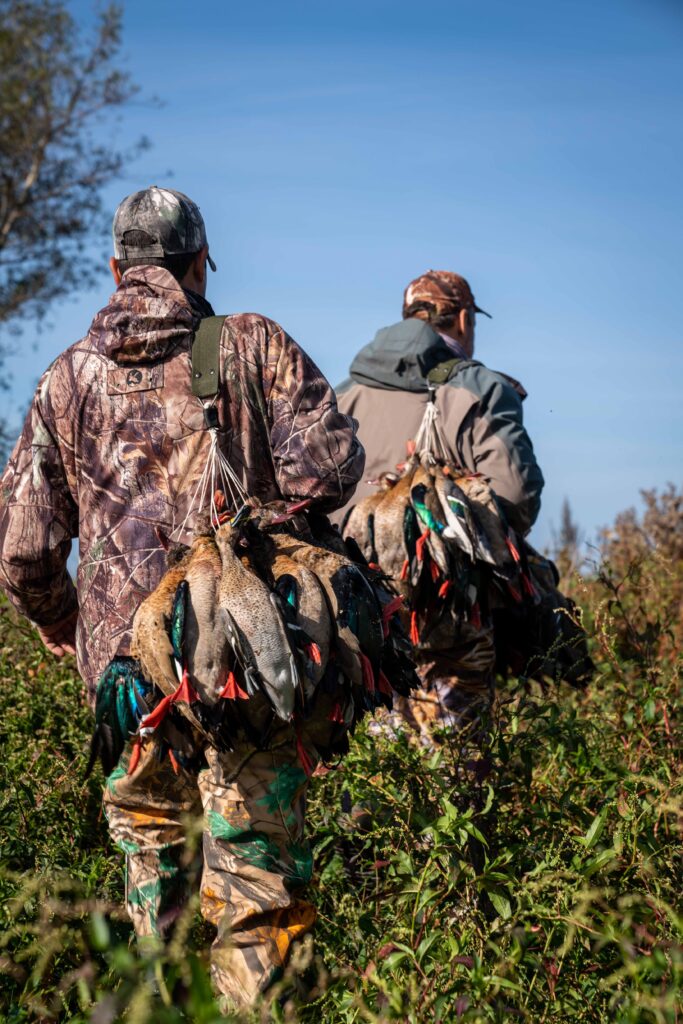
“That was incredible,” I said to Lucho and Torres as they hoisted two colorful straps of ducks containing cinnamon, silver, Brazilian and ringed teal. With the fog nearly burned off by the risen sun, their luminescent feathers shone in the sunlight. It had been an awesome morning hunting wild ducks in a beautifully wild place. On the ride back to the cruiser, I watched the passing countryside and felt blessed to be there.
Ryan Sparks is Associate Editor of SAFARI Magazine.
For more information about Duck Hunting Argentina Cruiser, contact Justin Witt at hemispheresunlimited.com.
This story originally appeared in the May/June 2023 issue of SAFARI Magazine.

